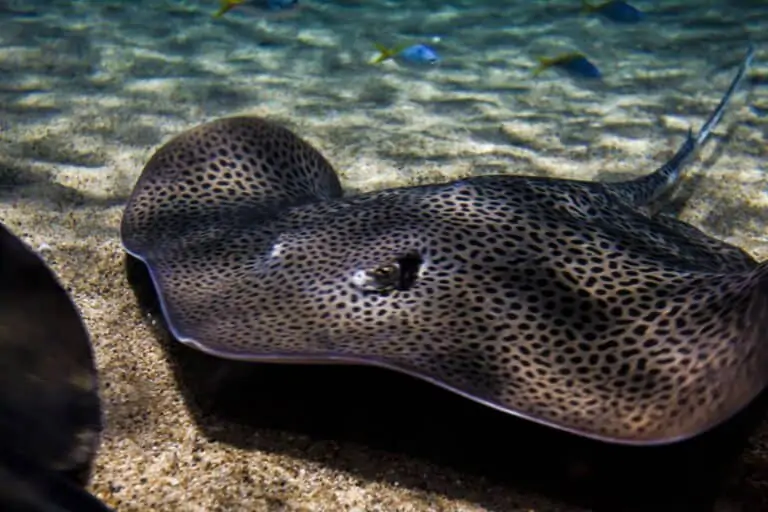
Size
Varying from 31 cm (1 foot) to 1.5 m (5 ft)
Physical Characteristics
These fish have been flattened, and their mouths and gill slits are located on the underside of their bodies. Spiracles, or breathing openings, are located just behind the eyes. Their tails typically feature one or more long, saw-like spines behind the pelvic fin and are longer than their disc width. The stinger is equipped with barbs that can rip through flesh when withdrawn and is used for self-defense. Below each spine are grooves that hold venom made of proteins. The stingray can occasionally have two stingers when a new stinger develops to replace the older one since the spines are continually being shed and replaced.
Temperament
Stingrays are not hostile creatures. When divers and snorkelers are present, they are curious and fun creatures, but if they sense danger, their natural inclination is to swim away. But, just like all other marine species, stingrays have a right to privacy.
Habitat
They can be found in rivers that flow into the Caribbean and the Atlantic as far south as the Ro de la Plata in Argentina. They are indigenous to tropical and subtropical northern, central, and eastern South America.
Keeping as Pet

- Tank Size
Freshwater stingrays can reach lengths of up to 18 inches and 1 foot in their tails. Therefore picking the ideal-size tank is the main prerequisite for the tank setup. Adult fish require a tank with at least 180 gallons of capacity to be comfortable, whereas young freshwater stingrays can thrive in a tank with a capacity of 75 to 90 gallons.
- Water Parameters
You should be very certain that the water conditions in your aquarium are perfect before getting a freshwater stingray. So, before adding water to the tank, you need to first adjust the water’s parameters.
The fish’s native habitat, which is tropical water, should be reflected in the water’s temperature. The ideal range for the temperature is from 75 to 82 degrees Fahrenheit. Freshwater stingrays may survive in a pH range of 6.8 to 7.6. For this fish, an alkalinity range of 18 to 70 ppm is ideal. In addition to these parameters, nitrate levels should not exceed 10 ppm, and ammonia and nitrite levels should be zero.
- Feeding
It is a carnivorous fish that becomes content when fed live foods like white fish. The Freshwater Stingray, on the other hand, enjoys invertebrates in its diet, thus including these in its daily diet would not only make it happy but also healthy. Fish can be fed mussels, shrimp, and bloodworms. You may occasionally give your freshwater stingray treats like terrestrial invertebrates like crickets.
Because it eats via mastication, the best part about feeding this fish is that you don’t have to worry or waste time separating shells or heads from its food. It will therefore chew the entire food item, preserving all of the nutritionally necessary components.
- Tank mates
The greatest tank mates for freshwater stingrays are other stingrays if your budget isn’t too tight and you have room for a larger aquarium at home. Aquariums in homes are able to support a wide variety of freshwater stingray species. Yet, even if it isn’t possible, there are still other options available because many aquatic creatures can coexist with freshwater stingrays.
Freshwater stingrays’ ideal tank mates include:
- Silver Dollars
- Arowanas
- Severum
- Pacu
- Large Gourami
Table





